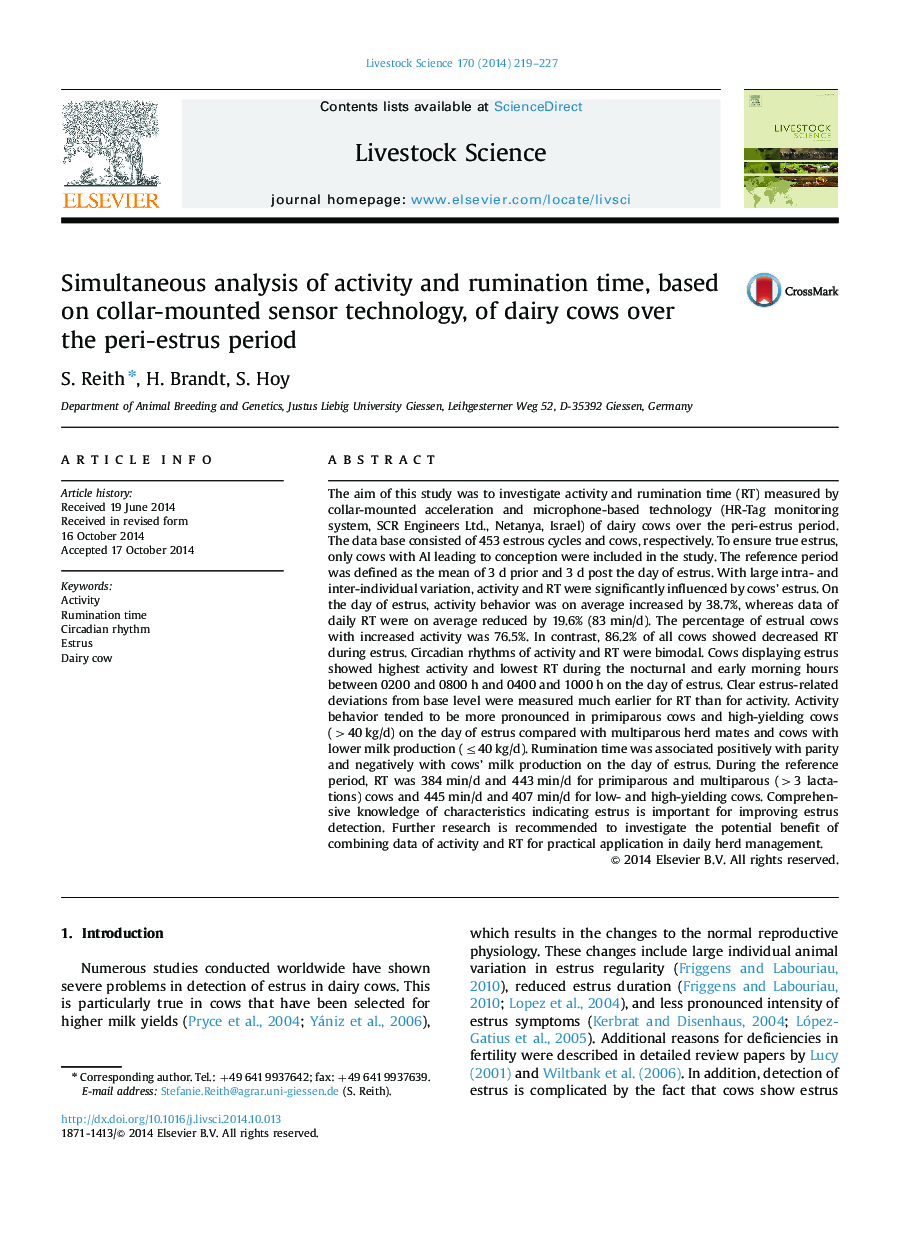| کد مقاله | کد نشریه | سال انتشار | مقاله انگلیسی | نسخه تمام متن |
|---|---|---|---|---|
| 2447184 | 1553962 | 2014 | 9 صفحه PDF | دانلود رایگان |
• Low reproductive performance of cows is still a major problem in dairy farms.
• Worldwide, there are severe problems in detection of cows’ estrus.
• Estrus can be detected automatically by different traits.
• We investigated activity and rumination time of cows in the peri-estrous period.
• Increased activity behavior as well as decreased rumination time are found to be indicators of estrus.
The aim of this study was to investigate activity and rumination time (RT) measured by collar-mounted acceleration and microphone-based technology (HR-Tag monitoring system, SCR Engineers Ltd., Netanya, Israel) of dairy cows over the peri-estrus period. The data base consisted of 453 estrous cycles and cows, respectively. To ensure true estrus, only cows with AI leading to conception were included in the study. The reference period was defined as the mean of 3 d prior and 3 d post the day of estrus. With large intra- and inter-individual variation, activity and RT were significantly influenced by cows’ estrus. On the day of estrus, activity behavior was on average increased by 38.7%, whereas data of daily RT were on average reduced by 19.6% (83 min/d). The percentage of estrual cows with increased activity was 76.5%. In contrast, 86.2% of all cows showed decreased RT during estrus. Circadian rhythms of activity and RT were bimodal. Cows displaying estrus showed highest activity and lowest RT during the nocturnal and early morning hours between 0200 and 0800 h and 0400 and 1000 h on the day of estrus. Clear estrus-related deviations from base level were measured much earlier for RT than for activity. Activity behavior tended to be more pronounced in primiparous cows and high-yielding cows (>40 kg/d) on the day of estrus compared with multiparous herd mates and cows with lower milk production (≤40 kg/d). Rumination time was associated positively with parity and negatively with cows’ milk production on the day of estrus. During the reference period, RT was 384 min/d and 443 min/d for primiparous and multiparous (>3 lactations) cows and 445 min/d and 407 min/d for low- and high-yielding cows. Comprehensive knowledge of characteristics indicating estrus is important for improving estrus detection. Further research is recommended to investigate the potential benefit of combining data of activity and RT for practical application in daily herd management.
Journal: Livestock Science - Volume 170, December 2014, Pages 219–227
